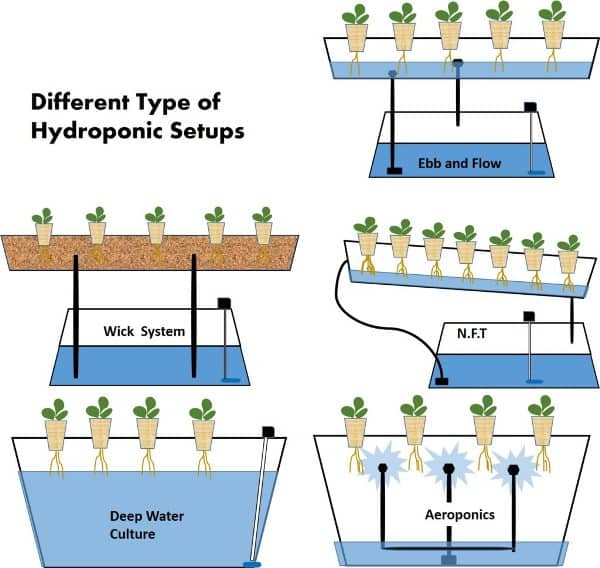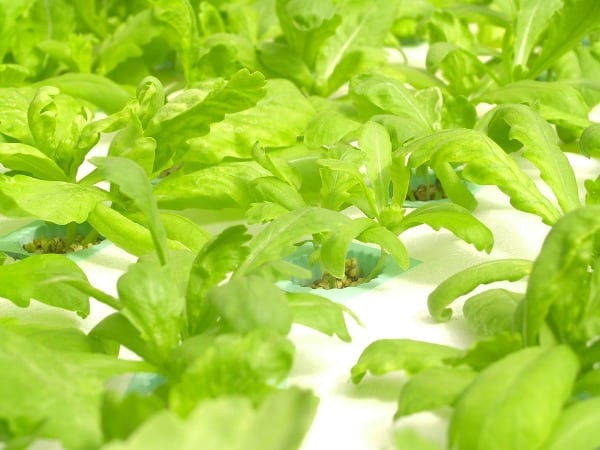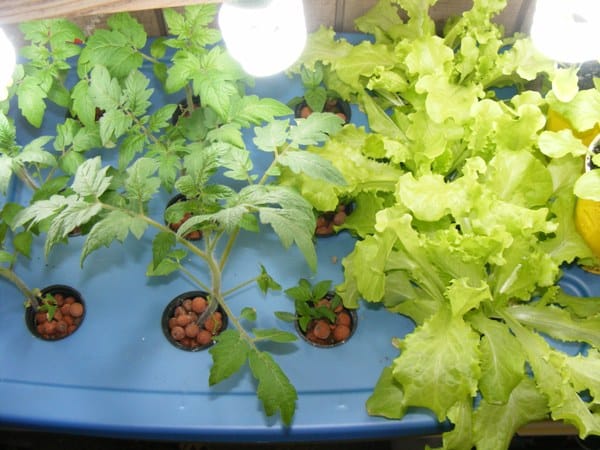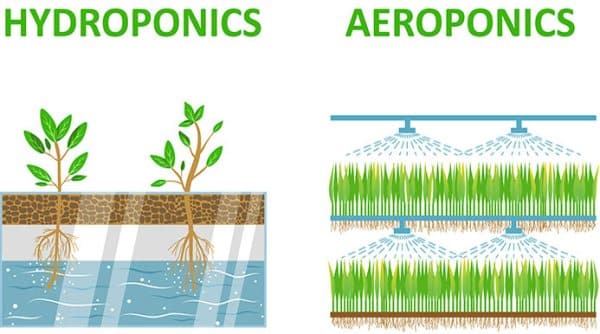Hydroponic Growing System:
The following information is all about Hydroponic Growing System.
Introduction: Hydroponics is a method of growing plants without soil. Plants are grown in soil, that’s what we know do you know that plants are grown without soil also. A modern technology called Hydroponic Growing System grows plants without soil in making water or deep moist air as a growing medium. Many of the vegetables and fruits are grown by using Hydroponic Growing System.
Plants grown in the Hydroponic Growing System don’t develop extensive roots, they are grown in an inert and in perfect growing medium with balance pH levels and nutrients. the hydroponic system makes plants spend complete energy in flowering and fruiting and minimizes the plant stress on the roots for searching nutrients.
Advantages of Hydroponic Growing System
- the growth rate of plants grown in the Hydroponic Growing System is higher than the plants grown in soil.
- The hydroponic plants grow 25% faster and give 30% more yields than the soil-grown plants.
- Plants are provided with balanced nutrients and pH levels, to raise healthy plants without any imbalances. Plants will be free from fungal and bacterial infections in the soil.
- Water consumption of water by plants grown in Hydroponic Growing System less compared to soil-based plants.
- Hydroponic Growing System reduces soil and water pollution.
Disadvantages of Hydroponic Growing System
- The Hydroponic Growing System is very expensive.
- A large-scale Hydroponic Growing System takes a long time to set up. And you need special training to maintain a Hydroponic Growing unit.
- Daily monitoring is compulsory in Hydroponic Growing System.
- There are many risk factors in managing Hydroponic Growing System. Even small pump damage can spoil the complete system.
- Hydroponic Growing System needs a constant supply of fresh water, as the growing medium in Hydroponic Growing System cannot store water like soil.
Types of Hydroponic Growing System
There are six different types of Hydroponic Growing systems.

Drip Hydroponic Growing System
It is the most popular hydroponic growing system. It has simple and easy operations. In a drip system plants are provided with a slow feed of nutrient solution to the growing medium. Slow draining mediums like Rockwool, Coconut coir, or Peat moss are used in a drip system.
Plant nutrients are mixed in water tanks and supplied for each plant through a network of drip irrigation pipes. These pumps are controlled by timers. Timers in drip irrigation is used to maintain time-based irrigation at a regular interval. The emitter is attached to each pipe that controls the time and flow of nutrients to the plants. Drip irrigation is very simple, you can easily control the flow of nutrients and pH levels in the growing medium.
There are two types of Drip Hydroponic Growing System:
Recovery Drip Hydroponic Growing System:
In recovery drip irrigation, excess nutrients are recycled. Excess nutrients are taken up back to the nutrient reservoir through drip irrigation, to control the flow of nutrients to plants. Due to the recycling of nutrients, a constant inspection is required as the nutrient concentration, reduces due to the recycling process.
Non-recovery Drip Hydroponic Growing System:
A Non-recover drip hydroponic Growing system doesn’t recycle nutrient solution. Maintenance cost is a bit less in this type of drip irrigation. Non-recovery drip doesn’t need constant monitoring as pH levels and nutrient levels remain constant.
Drip Hydroponic Growing suits well for all types of hydroponic farmers. Drip systems can be implemented by both home gardening and commercial Growing. you can grow any type of plant and any number of plants using a drip Hydroponic Growing System.
Ebb and Flow Hydroponic Growing System (Flow and Drain System)
The Ebb and Flow system is another popular hydroponic growing system, very simple setup and operations. In a hydroponic Growing system, the growing medium is flooded till it reaches a fixed point. Water is allowed up to a few inches below the top of the growing medium without overflowing. The water pump is controlled by the timer. The timer is set to the amount of time needed for the water to reach a fixed point in the growing medium. Once the timer runs up to a predetermined time, the timer shuts up the pump and water runs back through the pumps, draining the growing medium completely. In the Ebb system of Hydroponics, the timer is set at different times depending on the size and type of plants growing, temperature and humidity conditions, and the growing medium. As some plants and growing mediums cannot hold water for long periods in that case frequent flooding is needed.
Instead of shutting off the power to the water pump, use an automatic draining system, for example, a bell siphon to drain water automatically when it reaches a fixed point. The automatic drainage system allows more air and water movements to roots and promotes the growth of plants. Ebb and Flow Hydroponic Growing is a good choice and can grow many plants.
Wicks Hydroponic Growing System
Wick system is a simple and easy-to-operate hydroponic system. This hydroponic system has a simple setup that doesn’t require any electricity, pumps, or aerators.
In this system, plants are grown in an absorbent growing medium such as Coir, Coco, Perlite, or Vermiculite a nylon wick running from plant root into a reservoir of nutrient solution. The Wick system uses capillary action to move nutrients using a cotton wick to plants. In the wick system, plants are placed very near to the reservoir to minimize the travel distance of the nutrients up the wick. The main advantage of the wick system is, it delivers a slow and constant supply of nutrients. Wick system slow stream of nutrient solution supply makes the wick system better for smaller plants that require less watering. The Wick system should be maintained manually, multiple wicks should be provided depending on the plant count. The nutrient reservoir should be kept full, to reduce travel distance. The growing medium should be rinsed regularly to avoid nutrient build-ups. The main concern with the wick system is, the wick you use should be a good absorbent. Wicks used in this hydroponic Growing system is made of wool felt, nylon rope, cotton rope, Tiki torch wicks, rayon rope, fabric strips, and polyurethane yarn, etc.
Water Culture Hydroponic Growing System
The water culture hydroponic system is simply among all other types of hydroponic systems. It is the best hydroponic system to grow crops commercially and for home-based Growing. In water culture Growing, plants are placed under baskets right above the nutrient solution in the reservoir. the roots of the plants directly hang down from baskets into the nutrient solution. The roots get air and oxygen from the air bubbles that rise from the nutrient solution, you should implement aeration techniques to increase the air bubbles. Water culture needs more air bubbles, bubbles should be rise and make direct contact with the roots providing roots air and oxygen. There are two different types of aeration techniques in the water culture system.
Types of Aeration techniques in Hydroponic Growing System

Air Bubbles:
In this technique, air bubbles are created using an air pump used in aquariums and air stones. The air pump provides the air volume and is connected to air stones with an air tube. The air stones are made of rock material with small pores that create small air bubbles rising on top of the nutrient solution. Instead of air stones, you can use a soaker hose to generate air bubbles. Air bubbles generated from a soaker hose are smaller than air stone bubbles, small air bubbles provide better aeration, and they provide more contact with the water surface that helps the dissolved oxygen to reach the roots of the plants.
Falling Water:
In this aeration technique, falling water splashes in nutrition solution produce better air and dissolved oxygen to the roots of the plants. The higher the waterfall or more volume of water falling downwards, the deeper the agitation and more aeration provided. This aeration technique is implemented in commercial water culture systems, large volumes of water are used.
Circulating Water Culture System:
this is also called a re-circulating water culture system. This system works as a flood and drains Hydroponic Growing, but the solution is not drained. Many growing buckets are connected to a central reservoir, and each bucket has its own full-line and drains tube. The excess nutrition solution is drained back into the reservoir through the draining pump. Each bucket has a plant-filled with growing medium. you can have many rows of buckets, and all the buckets are filled with nutrition solutions using a pond pump. When the buckets are full, the water will be drained back to the reservoir using a drain pump where it is re-circulated.
In this re-circulating water culture system, the air pump is placed in the central reservoir. Using air pumps for each bucket individually is very expensive. The water pump should run round the clock, for constant production of air bubbles.
The Falling water aeration method also works well-circulating water culture Growing. In this re-circulating method, you don’t need to check the water level of each bucket, you can just the central reservoir and replace it if needed. It is more suitable for growing commercial Growing or from any plants.
Deep Water Culture (DWC) Hydroponic System
The DWC ISA version of water culture hydroponic growing system. the only difference is the depth of the water solution. The depth of the water system is 8-10 inches, and most of the hydroponic Growing, nutrition solution need not be deeper than 8 inches. A high depth of nutrition solution is needed only to grow large plants with heavy roots and need more water and space to grow.
The main difference between DWC and the water culture system is the depth. The depth of the solution depends upon the size of the plant roots, the water requirements of the plant, and the container used. The wide opened container is not recommended, just go for the shallow container.
Water Culture Hydroponic Growing System is simplest and inexpensive, but only a few ranges of crops grow in this Growing. In water culture roots stay constantly in the nutrient solution, some plants may die due to excess water only some species grow well in this situation.
Read about Growing Free Range Chickens.
Nutrient Film Technique (NFT) in Hydroponic Growing System
NFT system uses a continuous flow of nutrient solution flow type Hydroponic Growing, it is known for its efficient use of nutrients, simple setup, and exact feeding techniques. NFT system works like EBB and flows Growing technique. In the NFT technique, a small, shallow stream of nutrient solution is re-circulated over the roots of the plants through a channel, gutter, or tube.
NFT is like the Ebb and flow technique, but the only difference is nutrient solution flows directly over the roots. The NFT uses slightly angled shallow tubes so that the pump moves the nutrient solution to the higher portion of the system. And the solution moves gradually to the lower portion by gravity. the tubes have holes for plants, you can plant the plants directly through the holes. The plant roots fall directly into the nutrient solution. But in NFT, the roots are not completely soaked in water, the film makes only lower submerged with water and the upper part of the root remains dry. The plant roots are suspended into the growing tubes and the nutrient solution flows beneath the roots supplying the roots with a constant supply of nutrients.
This system allows a constant flow of nutrients without using a timer. In the NFT system, the flow rate of solution and slope gradient of the growing pump is the main concerns. The recommended slope of the growing tube is 1-inch slop for 30 to 40 inches long. The sloping of the tube can be adjusted depending on plants and their roots. The NFT system needs a constant power supply to avoid system failure, which causes root dry.
Aeroponics System

What is Aeroponics? Well, Aeroponics is a new way of growing plants using moist air. It is the best method that uses a very less amount of water. In the Aeroponics system, the plant roots are suspended in the air with roots hanging in the air. And the nutrient solution is pumped through high-pressure pumps and sprayed as a mist over the roots of the plants hanged. Mist air has more quantities of oxygen to the plants and promotes faster growth compared to other hydroponic systems.
Spraying should be done frequently as the misting provides a very less amount of nutrients to the roots. Constant spraying makes a nutrient solution more oxygenated which supports the fast and healthy growth of plants.
The main concern in this Growing technique is, the size of droplets sprayed to the roots. Small fine droplets sprayed roots grow faster than the large droplets sprayed roots.

Aeroponics system has subcategories as per the droplet size:
Low-pressure Aeroponics system: This is system generates large droplets, is the most popular and most used technique. This system is less expensive and doesn’t require huge equipment. It is not suitable for large-scale commercial Growing.
High-Pressure Aeroponics system: This is a more efficient technique, even though it is expensive. In this system, the nutrient solution is pressurized to generate the mist with fine droplets. In this system, small fine droplets produced that supply a good amount of oxygen to the roots of the plant results in faster growth.
Ultrasonic Foggers: Foggers are used to generate the mist with fine droplets. Although Fogger produces a mist, the moisture levels and oxygen levels are less. And the foggers sometimes drop to the bottom, you need to check constantly that whether the fogger supplying mist to the roots of the plants without a break.
Growing plants is no longer related to climate, season. you can grow any plant virtually round the year.
In case if you miss this: Organic Vegetable Farming In Greenhouse.
- Pig Fattening Essentials: From Selection to Sale for Beginners
- Raising Wagyu Cattle: A Complete Guide for Premium Beef Production
- Soil Types and Their Water Holding Capacity
- Optimizing Irrigation Schedules for Coconut Groves for Enhanced Yield
- Espresso Your Garden: Coffee Grounds for Healthier Acid-Loving Plants
- The Best Soil Mix for Snake Plants: How to Mix Your Own Snake Plant Soil
- Green Thumb Success: Expert Tips for Cultivating Greenhouse Beans All Year Round
- Bloom All Year Round: The Ultimate Guide to Indoor Hyacinth Care
- Eco-Friendly Gardening: How to Make Liquid Fertilizer from Kitchen Waste
- Ultimate Guide to Grow Anise in Pots: Explore Seed Propagation to Harvesting
- Guide to Raising Chester White Pigs: Discover Breed Facts to Growth Management
- Mastering the Elegance: The Ultimate Guide to Weeping Cherry Tree Care, Planting, and Maintenance
- Ultimate Guide to Planting Garlic in Grow Bags: Growing Strategies for Beginners
- How to Fix Spider Plant Leaf-Related Problems: Natural and Organic Remedies
- 10 Reasons Why Your Tulsi Plant is Shedding Leaves: Home Remedies and Solutions
- Optimizing Growth and Yield: The Advantages of Palm Bunch Ash Fertilizer
- Utilizing Neem Oil Extract as a Natural Pesticide for Hydrangea
- From Soil to Harvest: Various Ways in Which Farmers Can Use AI Tools
- Steps to Encourage and Induce Citrus Flowers: A Comprehensive Guide
- How to Fix Snake Plant Leaf-Related Issues: Natural and Organic Remedies
- Transform Your Garden into a Fragrant Oasis with Raat Ki Rani (Night Blooming Jasmine)

I would like to know more about the Dairy and Hydroponics. Please let send me more information
Regards
Ramana
Check this: Hydroponic Farming Cost.
Check this: Dairy Farming.
i am taking greaps production in 14 acar farm please send me more production how i can get.